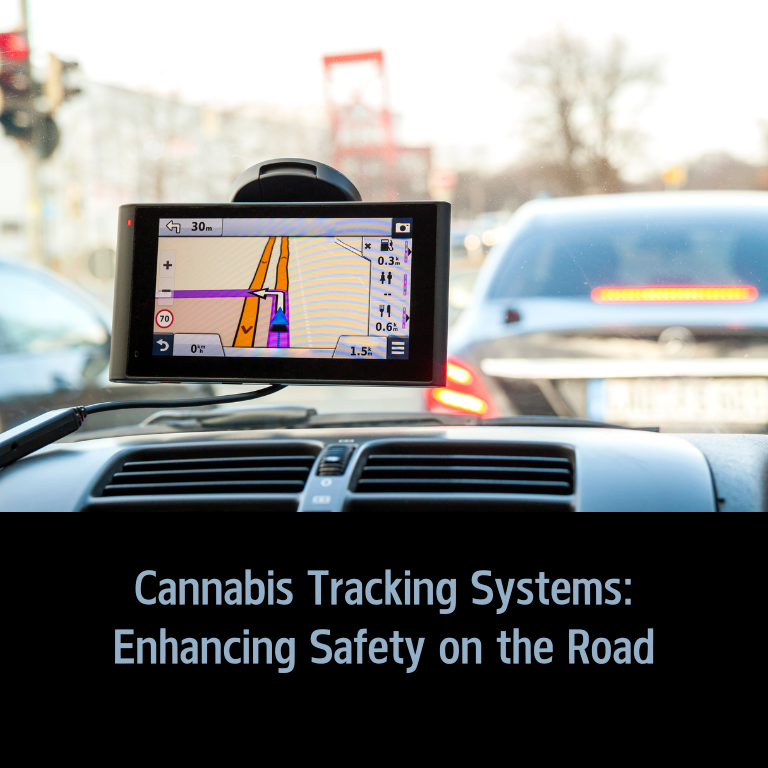Cannabis Tracking Systems: Enhancing Safety on the Road

As the cannabis industry expands across the United States, tracking systems have become an essential component in ensuring product safety, regulatory compliance, and public safety, especially on the road. Cannabis tracking systems—often part of a broader “seed-to-sale” technology—are designed to monitor the lifecycle of cannabis products from cultivation to the point of sale, preventing unauthorized access, illegal distribution, and unregulated transportation. This article explores the significance of cannabis tracking systems, how they work, their impact on road safety, and their broader implications for public health and regulatory enforcement.
Understanding Cannabis Tracking Systems
Cannabis tracking systems are digital platforms that use barcoding, RFID (Radio Frequency Identification), and GPS tracking to monitor cannabis products as they move through the supply chain. These systems are integrated into state regulatory frameworks, ensuring that all activities, from growth and cultivation to processing, packaging, and distribution, are logged and traceable. The goal is to provide a transparent and secure pathway for cannabis products, ensuring they remain within the legal market and are safely managed.
By tracking cannabis products in real time, these systems help prevent diversion into the black market and protect consumers by ensuring product quality and safety. A well-maintained tracking system also serves as a powerful tool for public safety, especially as cannabis distribution requires transportation across public roads.
The Importance of Cannabis Tracking Systems for Road Safety
The relationship between cannabis tracking systems and road safety may not be immediately obvious, but these systems play a critical role in minimizing risks associated with transporting cannabis. Here’s how:
Preventing Unauthorized Transport and Distribution: Cannabis tracking systems help prevent illegal cannabis from entering the market by ensuring that only licensed entities are involved in transportation. Each product package has a unique ID that allows regulators to verify its origin, ownership, and destination, reducing the risk of unlicensed drivers or transporters handling cannabis.
Improving Driver Accountability: Drivers and companies transporting cannabis must adhere to specific regulatory requirements. Tracking systems allow regulators to monitor driver activity, routes, and adherence to legal requirements, ensuring that companies uphold standards for secure and safe transportation. GPS tracking provides real-time visibility into vehicle movements, minimizing the potential for diversion or theft.
Reducing the Risk of Product Theft: Cannabis products, especially in large quantities, can be a target for theft, which poses a risk not only to the driver but also to public safety. Tracking systems enable immediate reporting and intervention if suspicious activities occur, such as unscheduled stops or route deviations. In the case of theft, these systems can alert law enforcement, providing crucial data for recovery efforts.
Minimizing Impaired Driving Among Transporters: Tracking systems also provide additional accountability for drivers, ensuring they adhere to stringent safety protocols, which include sobriety requirements. Companies can monitor driver behavior, and regulators can quickly identify any transporter who might not be following safety standards. By implementing strict checks within the tracking system, companies discourage impaired driving among those responsible for cannabis transport.
How Cannabis Tracking Systems Work
Cannabis tracking systems operate through a combination of digital tools that monitor the product at each stage in the supply chain. The key components include:
Seed-to-Sale Software: This software records each plant’s life cycle, tracking it from its initial planting to harvest, packaging, and distribution. Each plant or product is assigned a unique identifier, which can be scanned and updated as it moves through each stage of production and transportation.
Barcoding and RFID Technology: Each product package is equipped with a barcode or RFID tag, allowing it to be scanned at various checkpoints along the supply chain. These tags store essential information, such as the product’s origin, THC content, intended destination, and expiration date.
GPS and Route Monitoring: When cannabis products are in transit, GPS tracking is used to monitor the vehicle’s location and route. This data is accessible to both the licensed transport company and state regulators, who can ensure that the product reaches its intended destination without deviation.
Compliance Dashboards: Regulatory agencies often have access to compliance dashboards provided by tracking systems. These dashboards allow them to see the status of cannabis products within their jurisdiction, helping them monitor compliance with regulations, identify potential issues, and intervene if necessary.
By combining these components, tracking systems provide end-to-end visibility over the entire cannabis supply chain, reducing the chances of unauthorized access, loss, or theft.
Enhancing Compliance and Deterrence on the Road
A well-designed tracking system not only promotes road safety but also strengthens compliance within the industry. Here’s how cannabis tracking systems act as deterrents against potential road-related safety violations:
Deterrence Against Unauthorized Routes and Destinations: Cannabis transporters are required to follow specific routes approved by regulators. Tracking systems alert authorities if a vehicle deviates from the permitted path, allowing for immediate action if the product is transported to an unauthorized destination.
Preventing Overloading and Unsafe Transport Conditions: Cannabis transport vehicles must meet specific safety requirements, such as secure locking mechanisms, appropriate climate control for product quality, and limited load capacity. Tracking systems help monitor adherence to these standards, preventing transporters from overloading vehicles or neglecting safety protocols that could compromise road safety.
Enabling Regular Audits and Compliance Checks: Regulatory agencies can use tracking data to audit transport activities and conduct routine checks on cannabis distribution patterns. By monitoring travel logs and activity records, they can identify any potential compliance issues or safety risks. Companies with high compliance rates can benefit from a positive reputation, while those with frequent deviations are subject to penalties.
Impact on Public Safety and Legal Compliance
By helping to keep cannabis transport within legal and regulated channels, tracking systems play an indirect yet vital role in public safety. The data generated through these systems also enables law enforcement and regulatory bodies to assess the scale and safety of cannabis transport activities within a state, helping them make informed decisions about resource allocation and enforcement priorities.
In addition, tracking systems assist in maintaining the quality and integrity of cannabis products. Road safety is tied to this quality because any tampering or contamination during transport could have adverse effects on consumers. Knowing that products are tracked and monitored increases consumer confidence and ensures that companies adhere to standards that protect both users and the general public.
The Benefits of Real-Time Data for Law Enforcement
Real-time tracking data is one of the most significant advantages that cannabis tracking systems offer law enforcement. This data provides law enforcement agencies with crucial insights, including:
Immediate Notification of Suspicious Activity: If a cannabis transport vehicle strays from its authorized route or makes unscheduled stops, the tracking system can automatically notify law enforcement or the transport company. This enables rapid response to potential issues, whether it’s a suspected theft, unauthorized distribution, or vehicle tampering.
Efficient Resource Deployment: By accessing data on cannabis transport patterns, law enforcement can strategically allocate resources and plan patrols along high-traffic routes for cannabis distribution. This proactive approach allows for enhanced surveillance in areas where incidents may be more likely to occur.
Facilitating Investigations in Case of Accidents: In the event of a vehicle accident involving cannabis, law enforcement can use tracking data to reconstruct the incident and assess if regulatory standards were followed. Data on speed, route, and stops can help determine if the driver or transport company was negligent or in violation of state policies.
Challenges and Limitations of Cannabis Tracking Systems
While tracking systems offer substantial benefits, they also come with certain challenges:
Privacy Concerns: There are privacy considerations for drivers whose movements are monitored in real time. Balancing transparency with individual privacy rights can be challenging, as companies and regulators aim to ensure safety without infringing on personal rights.
Technical Limitations and Reliability: Technical issues, such as connectivity problems in remote areas, can affect the accuracy of tracking systems. GPS outages or software malfunctions may lead to gaps in tracking data, impacting regulatory oversight.
Cost of Implementation: Cannabis tracking systems require investment in software, equipment, and training, which can be a barrier for smaller companies. The costs associated with compliance may be prohibitive, especially for companies with limited resources.
Cybersecurity Risks: As digital tools, cannabis tracking systems are vulnerable to cyberattacks. Ensuring that data is securely stored and protected against unauthorized access is critical for maintaining the integrity of these systems.
Future of Cannabis Tracking Systems and Road Safety
The potential of cannabis tracking systems to enhance road safety will likely grow as technology continues to advance. Integrating artificial intelligence, machine learning, and blockchain could further improve these systems, adding layers of accuracy, transparency, and data security.
For instance, AI could assist in predicting potential compliance violations based on historical data, while blockchain technology could enhance data security, making it more difficult to tamper with tracking records. These innovations could make tracking systems even more robust, enhancing road safety and strengthening regulatory compliance across the cannabis industry.
Cannabis tracking systems have proven to be a valuable tool for enhancing safety on the road and ensuring regulatory compliance within the industry. By preventing unauthorized transport, monitoring driver behavior, and providing real-time data to law enforcement, these systems help reduce risks associated with cannabis transportation and protect public safety.
As the cannabis industry continues to expand, tracking systems will remain central to operational integrity and transparency. Through continued investment in technology and commitment to compliance, cannabis companies can leverage these systems to build trust, promote safety, and contribute to a well-regulated market that benefits both consumers and society as a whole.











